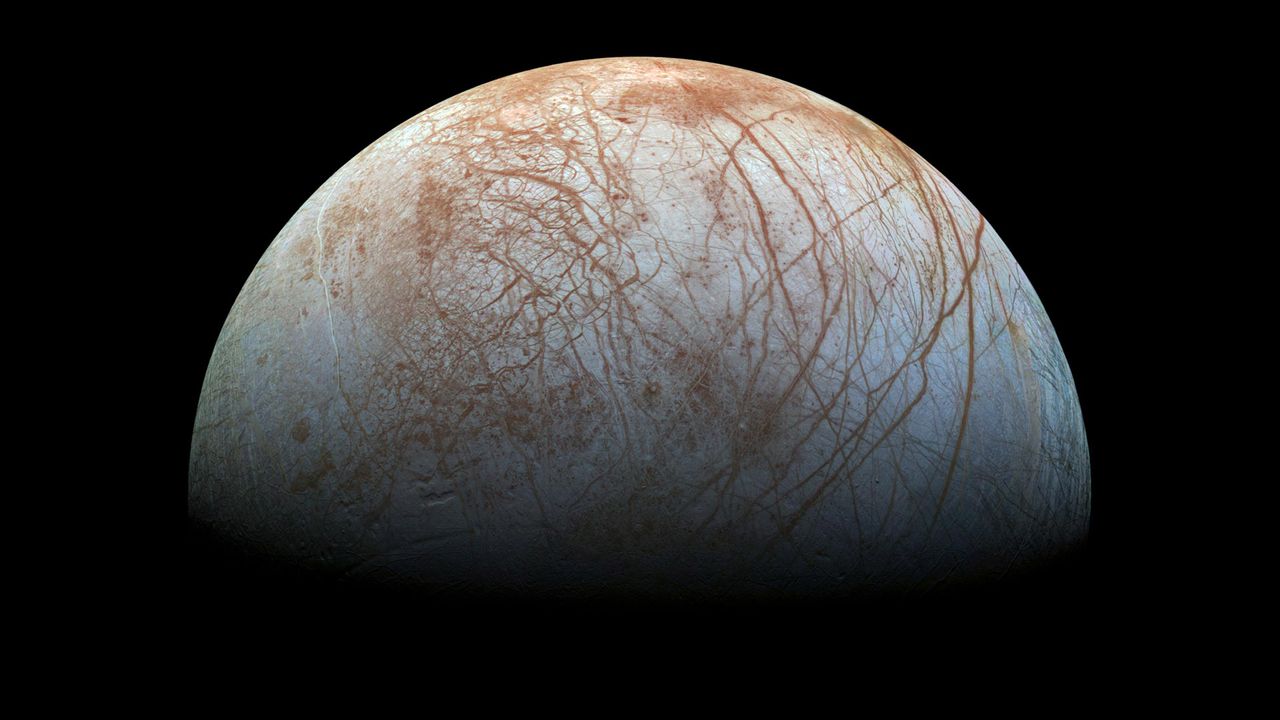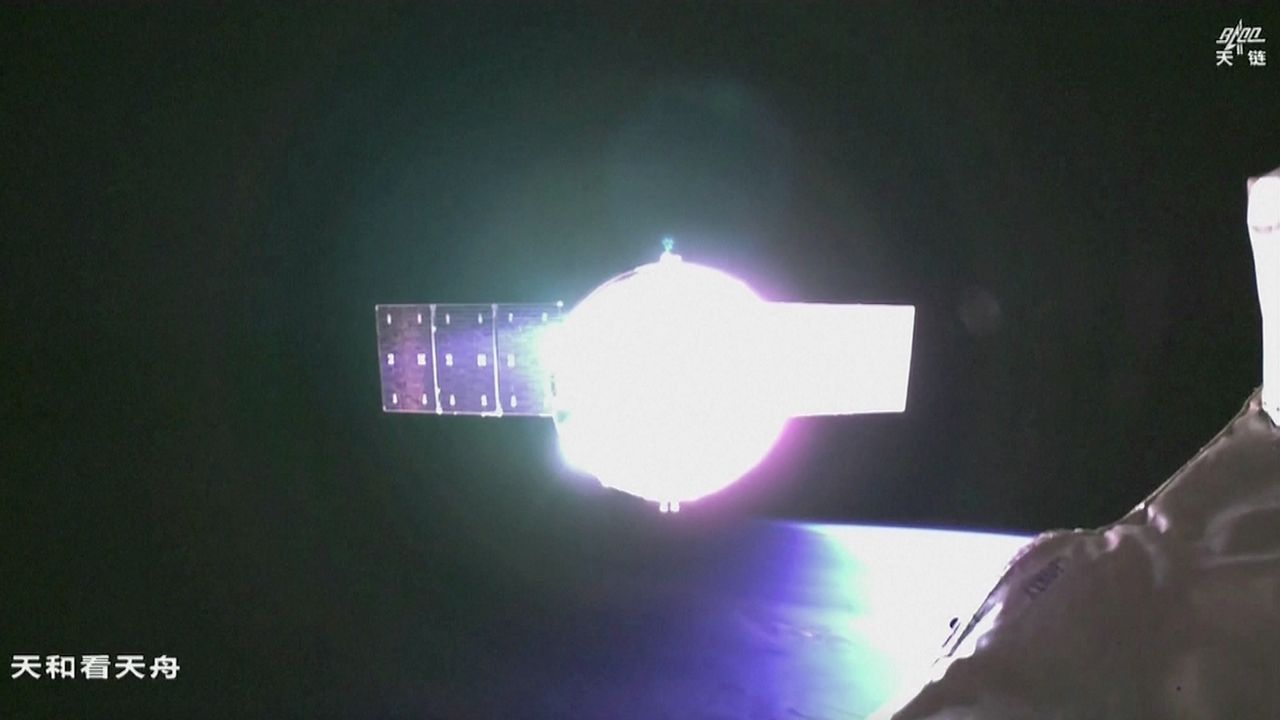Now Reading: Scientists Uncover Chemistry Clues on Jupiter’s Moon Europa
-
01
Scientists Uncover Chemistry Clues on Jupiter’s Moon Europa
Scientists Uncover Chemistry Clues on Jupiter’s Moon Europa

Rapid Summary
- Scientists may have resolved the mystery of hydrogen peroxide (H2O2) distribution on Jupiter’s moon Europa.
- H2O2 forms when water ice is exposed to energetic particles, breaking apart water molecules and recombining OH radicals.
- Observations from NASA’s Galileo spacecraft and the James Webb Space Telescope (JWST) revealed elevated H2O2 levels in warmer “chaos terrains” near Europa’s equator, contrary to expectations of higher concentrations in colder polar regions.
- Researchers detected increased carbon dioxide (CO2) levels in chaos terrains, hypothesizing that CO2 escaping from Europa’s subsurface ocean interacts with surface chemistry to enhance H2O2 production.
- Laboratory experiments confirmed that CO2 presence significantly boosts peroxide formation by acting as a “molecular scavenger,” stabilizing hydrogen peroxide against further breakdown.
- The findings provide insights into surface chemistry and are relevant for astrobiological studies tied to missions like NASA’s Europa Clipper and ESA’s JUICE spacecraft.
Indian Opinion Analysis
This revelation about hydrogen peroxide and carbon dioxide interactions on Europa provides valuable insights into extraterrestrial chemical processes with implications for astrobiology. For India, which is advancing its own space exploration with Chandrayaan and upcoming interplanetary missions, such studies offer an chance to enhance global collaborations in planetary science. Understanding surface chemistry under extreme conditions could also inspire India’s growing expertise in space-related technologies or life sciences research targeted at understanding life’s potential beyond Earth.

























